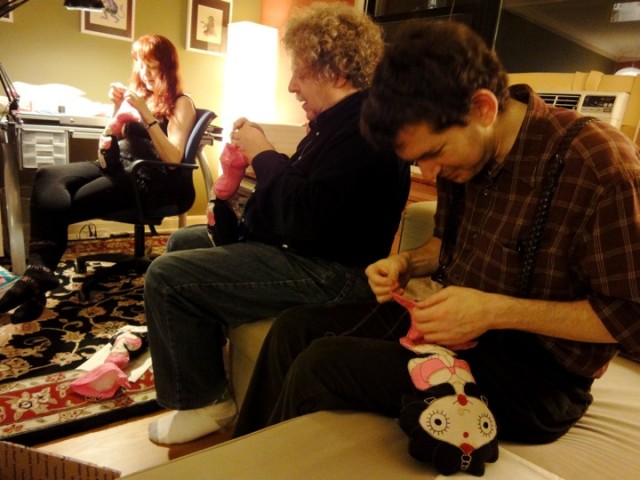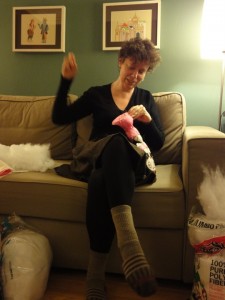These aren’t dolls, or toys, or cushions – they’re SOFT SCULPTURES. Why? because regulatory capture means the cost of registrations, licenses, and fees to legally call it a doll are beyond anything we could possibly afford.
ONLY 30 IN EXISTENCE! SIGNED AND NUMBERED. BUY ONE HERE FOR $50.
These limited edition soft sculptures were hand-appliqued, beaded, and embroidered in India by the craftswomen of Ubuntu at Work; each unique piece is signed in embroidery by the woman who fashioned it. Because of the cost of registrations, licenses, and fees to legally import them already stuffed, they were sent unstuffed to New York, where I and my colleagues lovingly stuffed each one with polyester fiber-fill and sewed them up by hand.

That way, if calling them soft sculptures not dolls/toys/cushions, and including this “WARNING! DANGER! NOT FOR CHILDREN! UNREGULATED ITEM MAY CAUSE CHOKING, EXPLOSIONS, OR APOCALYPSE!” is not sufficient to avoid a lawsuit, it is I, Nina Paley, who will accept the liability, rather than Ubuntu at Work.

While stuffing and sewing are exactly the sort of labor the craftswomen of Ubuntu at Work desire, and do efficiently and well and affordably, regulatory capture of stuffed goods in the U.S. ensures they won’t get this work, and established legacy toy corporations with legal teams will hire slave labor to make corporate crap instead. Therefore this is a LIMITED EDITION of only 30 soft sculptures. Each one is also signed and numbered by me, Nina Paley.
Made of cotton fabric; cotton and polyester thread; small glass beads; polyester fiber fill. About 15″” tall.
WARNING! DANGER! NOT FOR CHILDREN! UNREGULATED ITEM MAY CAUSE CHOKING, EXPLOSIONS, OR APOCALYPSE!

Continue reading “Sita Limited Edition Signed Soft Sculptures”



